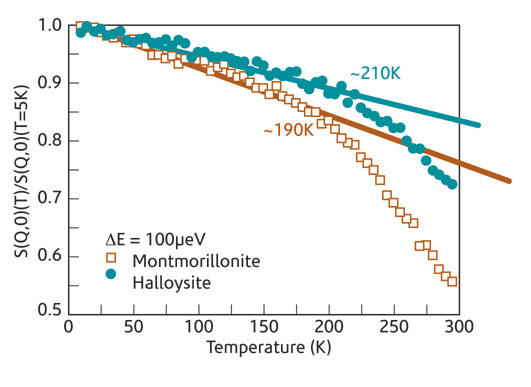This is because cations, such as sodium, act as gatekeepers regulating the reversible adsorption of water. To explore possible differences in the water dynamics related to the presence of cations in clays, and to examine the dynamics of surface water which plays a significant role in water diffusion in clay barriers, we have carried out a quasi-elastic neutron scattering study on two clays, montmorillonite and halloysite. Halloysite is unique – a clay where no cations are present in the interlayer space so that interlayer water is weakly held and can readily and irreversibly dehydrate. The quasi-elastic spectra we observed can be ascribed to different diffusion processes, with montmorillonite having four times the diffusion coefficient compared with halloysite. Differences in the elastic incoherent scattering intensity highlight the important role that cations play in regulating Atmospheric water uptake in clays.

The effect of interlayer cations is shown by the lower temperature activation of the motions in the montmorillonite compared to the halloysite interlayer water
LP Aldridge (ANSTO and University of New South Wales, Australia), HN Bordallo (Hahn- Meitner-Institut, Germany), GJ Churchman (University of Adelaide, Australi), WP Gates (SmecTech Research Consulting and Monash University, Australia), MTF Telling (ISIS)
Research date: December 2007
Further Information
Dr Heloisa Bordallo, bordallo@hmi.de
